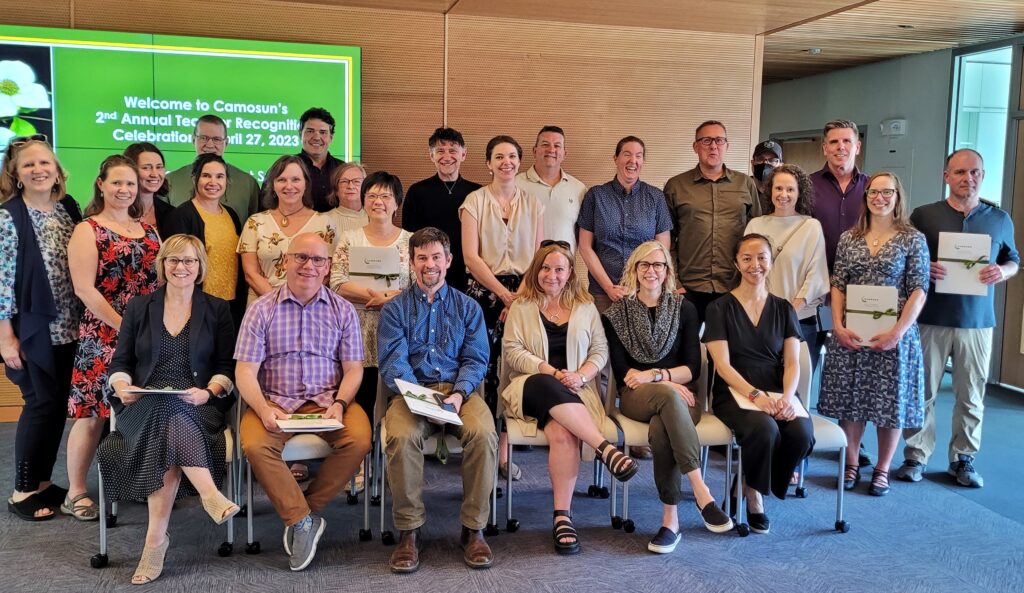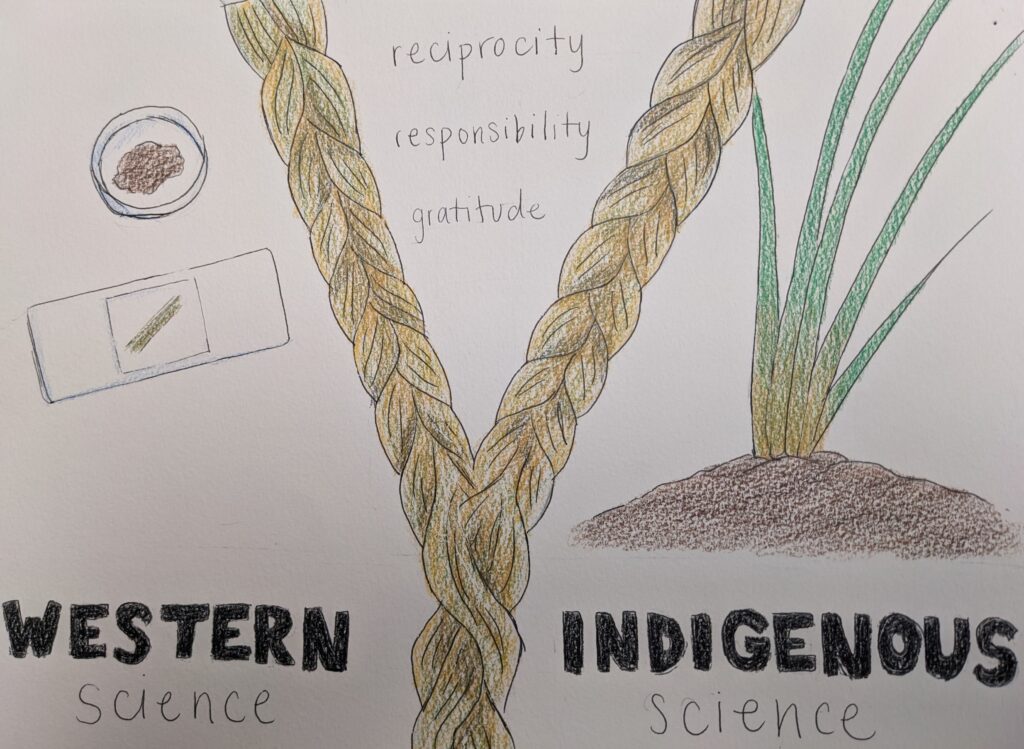Emah teaches in, and is Chair of, the Massage Therapy program at Camosun College, and she was also one of 28 faculty members who received a Teacher Recognition Award this year.
Massage Therapy is a relatively new program, starting in 2019 – yes, just before the pandemic hit – and Emah was the first faculty member hired in the program. Massage Therapy is a cohort-based, two-year program (six semesters with no breaks) with 24 students per cohort (which is the most they can accommodate in their spaces currently) and about 15 faculty (which surprised me – I had no idea it was so large!)
Like Sonography, Massage Therapy runs a clinic on campus to give students that work integrated learning experience. “It runs exactly like a regular massage therapy clinic, and students are directly supervised by Camosun faculty, which is a requirement of the program’s accreditation. This simulated clinic experience is most reflective of what it is like to be in a real practice” But in addition to the on-campus clinic, Massage Therapy students also engage in community outreach. “Our students go to locations like New Roads Therapeutic Recovery Community, a part of Our Place, where they treat folks who have substance disorders, are struggling with homelessness, and often have chronic health conditions with orthopedic conditions layered on top. The students also work with the Victoria Foundation, which is a society for youth who are struggling with mental health and substance abuse, as well as with other organizations. When students work in community, they’re working with specialized patient populations who are less likely to come into a clinical setting which is both valuable for student learning and valuable to the members of the public.” Emah told me that these outreach opportunities are not only close to her heart but are also wildly successful with the students.
I asked Emah what she enjoys most about teaching. “The first time I was in the classroom, I had that flow state experience where I lost track of time – I always tell my students that they will have to stop me because I will not know when it’s break time. That dynamic of students having meaningful conversations and watching them create relationship and community in the classroom, well its exciting to know that you have a little piece in that. That moment where the content suddenly makes sense to a student – it’s that high we all seek. I also joke about the fact that I’m the youngest of five children, so it’s just nice to have people listen, although after teaching for 15 years, I am now at a point where I feel comfortable turning it over to the students to do the talking.”
I, of course, had to ask Emah about the impact of COVID on her program, especially given that the program had just started when the pandemic shut things down (see Diane C’s story as well). “COVID had a massive impact because our program is, of course, literally face-to-face and hands-on. There were already enough challenges creating and running a brand-new program, with no faculty hired yet, and building everything from the ground up while a group of students was going through the program. COVID hitting made things extra hard. But, because we weren’t really stuck in our ways yet, it was also an opportunity to do something different, to engaging in lots of wild, creative problem-solving.” In addition, Emah told me that their program was one of the only ones in BC that managed to continue even through the initial lock-down. “Because it was our very first group of students, we were able to quickly move courses so that those that were not hands-on (some of the heavy science courses) came first, and the more hands-on came later. Was that great? No, it was terrible, but it kept us running (especially since this was a new program) and allowed the students to graduate on time where most other programs had to delay graduation.”
I wondered about the student experience from then until now. Emah noted that especially during the midst of the pandemic how challenging it was for students. “I don’t think we recognize the mental health impact that that experience had, particularly on younger people. And in my profession the vulnerability level is sky-high. If there is trauma, it will come up – I’ve been an educator for over 15 years and mental health crises are a part of this profession. But the two classes who went through COVID experienced escalated trauma and emotional dysregulation which really impacted the students academically. And now in year three with COVID moving past, this cohort is experiencing what I would call a sustainable level of mental health crisis, which is just part of the profession. But the temperature rose to a boiling point for two years which was a lot for our faculty to manage.”
Emah is very appreciative of the team she works with. “We have an incredible Department of faculty and not only do we enjoy working together, we also love to engage with each other outside of work. They’re just incredible human beings. Almost all of us have worked in private schools, and coming to Camosun feels amazing – we’re all so grateful to be here.”
When I asked Emah for a memory of teaching that stood out for her, she said “the biggest aha moment with this program is how we enter the classroom with a significant level of humility. We approach the classroom as an opportunity to engage with other adults to all learn. While I recognize that there is a power dynamic inherent in the post-secondary structure, I truly go into the classroom recognizing us as a group of human beings who want to work together. It goes well when you show up vulnerable and humble. Everybody just relaxes, including the faculty, and then we can get the job done. Students and faculty work together to figure it all out.”
I ended our conversation asking Emah, as a faculty member and Chair, what advice would she have for faculty starting at Camosun. “Things often feel like such a big deal, but most things are not, so try to bring that intensity down, even when it feels like your stress is sky high. In addition, be your authentic self. When the going gets tough people will work with you if you’re you and they sense that you’re you, particularly students. And finally, be kind but fierce. There will always be conflict and struggle, so take your stance, but try to be kind in the process.”

 Congratulations to 28 faculty from across Camosun College who are being recognized for their contribution to teaching and learning!
Congratulations to 28 faculty from across Camosun College who are being recognized for their contribution to teaching and learning!
